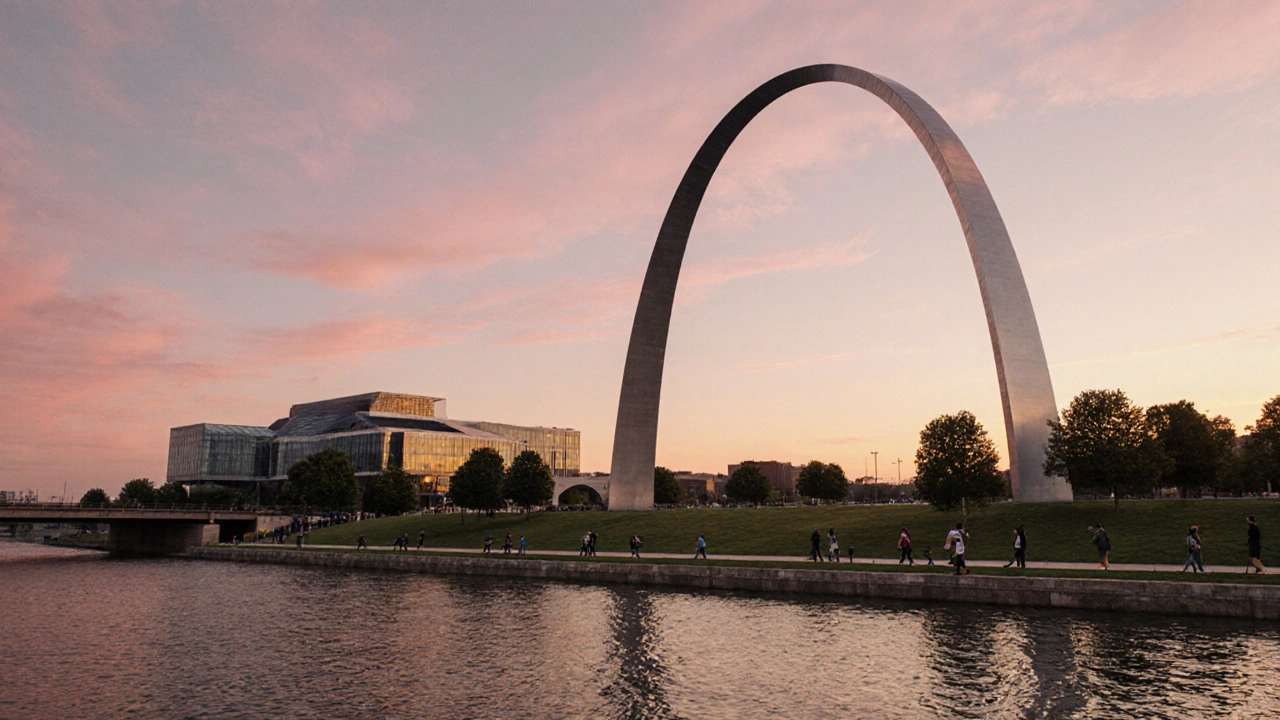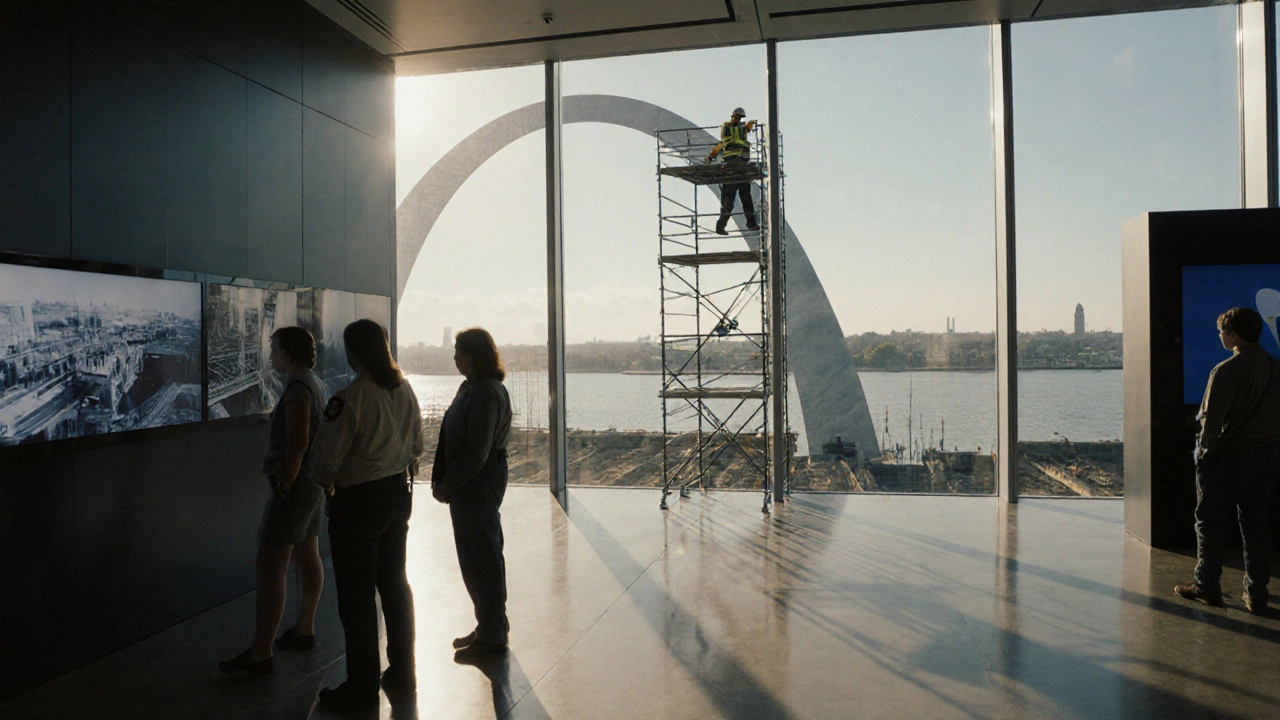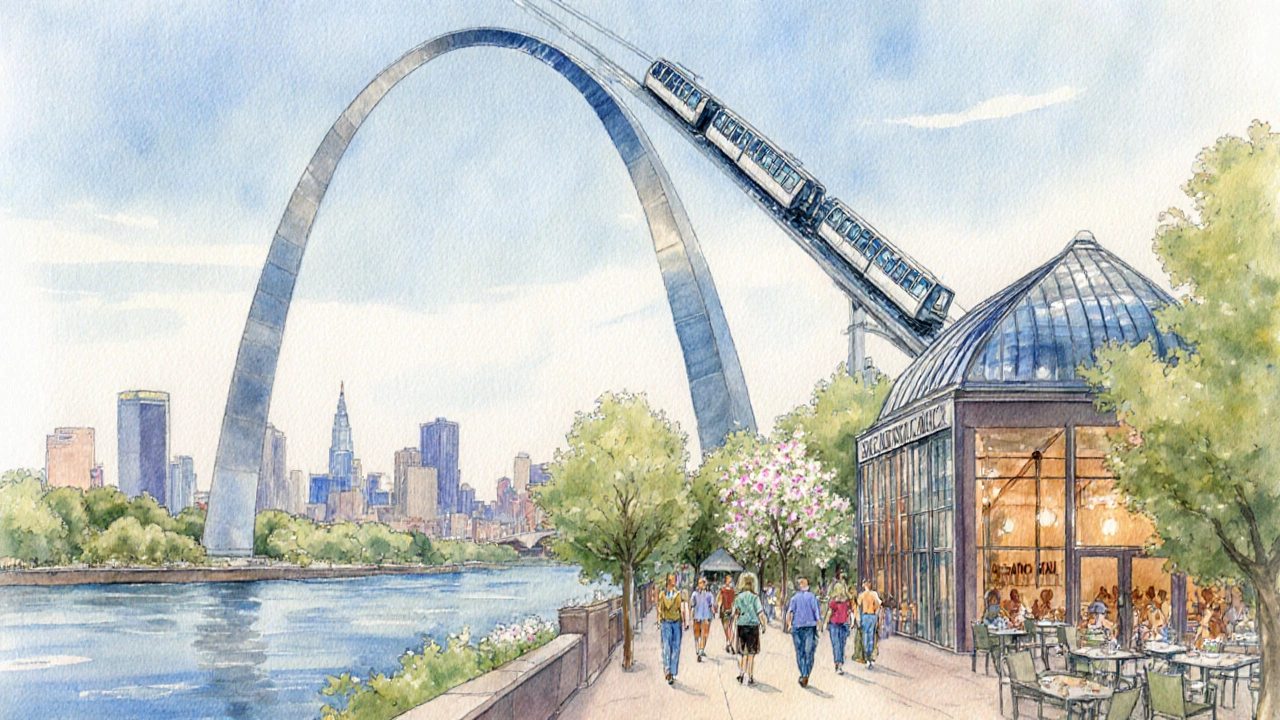Why the Gateway Arch Is a U.S. National Park - Explained

National Park Eligibility Quiz
Test if a hypothetical site qualifies as a U.S. National Park based on the three criteria described in the article: significance, integrity, and public benefit.
How exceptional is the site's historical, cultural, or natural value?
How well does the site retain its key features without extensive alteration?
How much educational, recreational, or inspirational value does the site offer to the public?
Ever wondered why a sleek steel curve in downtown St.Louis counts as a national park? The answer weaves together history, law, and a bit of civic pride. Below we untangle the story, the criteria, and what the designation really means for visitors and preservationists.
What Exactly Is Gateway Arch National Park?
Established in 2018, Gateway Arch National Park protects the iconic Gateway Arch and the surrounding riverfront landscape. The park covers roughly 91 acres, stretching from the arch’s base on the west bank of the Mississippi River to the museum and visitor center on the east side. Its official name reflects the original 1935 monument, the Jefferson National Expansion Memorial, which commemorates westward expansion.
The National Park Service and Its Role
The National Park Service (NPS) is the federal agency that manages the nation’s park system. When Congress upgrades a site to “national park” status, the NPS takes over daily operations, funding, and long‑term preservation. For the Gateway Arch, the agency added new staffing, interpretive programs, and a dedicated budget line in the 2018 Consolidated Appropriations Act.
How Does a Site Earn the National Park Label?
There’s no single formula, but three core factors guide Congress and the NPS:
- Significance: The site must hold exceptional natural, cultural, or historic value.
- Integrity: The resource should retain its key features without extensive alteration.
- Public Benefit: The area should offer educational, recreational, or inspirational experiences for a broad audience.
Why the Arch Qualified
First, the Arch is a masterpiece of engineering and design. Built between 1963 and 1965, the 630‑foot stainless‑steel structure was the tallest monument in the United States at its completion. Second, its symbolism is deeply tied to the nation’s story of westward expansion, a theme cemented by the adjacent Jefferson National Expansion Memorial. Third, the site’s location on the Mississippi River gives it a natural‑landscape component, providing riverfront habitats and scenic vistas.

Comparing the Arch to Traditional National Parks
| Feature | Gateway Arch National Park | Average Large National Park (e.g., Yellowstone) |
|---|---|---|
| Primary focus | Historic monument & riverfront | Natural wonders & wildlife |
| Acres | ≈91acres | >2million acres |
| Annual visitors (2023) | ≈4million | ≈4million (average) |
| Managing agency | National Park Service | National Park Service |
| Designation year | 2018 (as a national park) | Varies, many early 1900s |
While the Arch’s acreage is tiny compared with parks like Yellowstone, its visitor numbers are on par, showing how cultural landmarks can draw crowds just as powerfully as wilderness.
The Role of U.S. Congress in the Designation
Only Congress can officially change a site’s status to “national park.” In December 2017, the Senate passed a bipartisan amendment that renamed the Jefferson National Expansion Memorial as Gateway Arch National Park. The House approved the change a month later, and President Trump signed the bill into law on February 26, 2018. The legislative process underscores the political weight behind the title.
How the Designation Affects Visitors
For tourists, the upgrade brings a few tangible benefits:
- Enhanced facilities: The new Visitor Center offers interactive exhibits, a theater, and a rooftop café with river views.
- Free ranger‑led programs: From historic talks to river ecology walks, the NPS provides daily educational opportunities at no extra cost.
- Preservation funding: Federal dollars now support structural monitoring, corrosion control, and landscape restoration.
Preservation Challenges Unique to the Arch
Maintaining a 630‑foot stainless‑steel monument is no small feat. The NPS conducts a full structural inspection every two years, checks for rust in the rib seams, and applies protective coatings. Additionally, the river’s fluctuating water levels require constant shoreline reinforcement to prevent erosion behind the monument’s base.

Common Misconceptions
Many people mistakenly think the Arch is a “national monument” or a “state park.” While it was once designated a national monument in 1935, the 2018 change broadened its scope to include surrounding lands, elevating it to national‑park status. Another myth is that the park focuses only on the arch itself-actually, the riverfront trail, museum, and historic downtown area all fall under the park’s protection.
Quick Facts Checklist
- Official name: Gateway Arch National Park
- Location: St. Louis, Missouri
- Size: ~91 acres
- Established as a national park: 2018
- Managed by: National Park Service
- Key attractions: The arch, Visitor Center, Riverfront Trail, Museum of Westward Expansion
Planning Your Visit
Arrive early if you want to ride to the top-tickets sell out quickly during peak summer weekends. The tram runs every 15 minutes, and you’ll spend about 30 minutes inside the arch. Afterward, explore the Museum of Westward Expansion for a deeper dive into the pioneer era. Don’t forget to walk the riverfront trail; it offers sweeping views of the skyline and the Mississippi.
Frequently Asked Questions
Why was the Gateway Arch upgraded from a national monument to a national park?
Congress wanted to recognize the broader historic and cultural landscape surrounding the arch, not just the monument itself. The park designation allowed the NPS to protect the riverfront, museum, and visitor facilities under a single management plan.
What are the main criteria for a site to become a U.S. national park?
A site must have exceptional significance (natural, cultural, or historic), retain its essential characteristics, and offer broad public benefit such as education or recreation.
Can I camp inside Gateway Arch National Park?
No. The park is an urban historic site without designated camping areas. Nearby campgrounds are available in the St.Louis region, but not within the park boundaries.
How does the National Park Service fund the preservation of the arch?
Funding comes from a combination of federal appropriations, the park’s own entrance‑ticket revenue for the tram ride, and occasional congressional earmarks for major restoration projects.
Is the Gateway Arch listed on the National Register of Historic Places?
Yes. The entire Jefferson National Expansion Memorial, which includes the arch, was added to the National Register of Historic Places in 1966, reinforcing its historic protection before the park upgrade.
Observe how the article lazily conflates “national park” with “urban monument,” ignoring the strict legal definition that the National Park Service enforces; this is a grave misrepresentation that deserves a scathing rebuttal.
Furthermore, the phrasing “sleek steel curve” is an oxymoron that betrays a lack of precision-steel is anything but sleek without proper context.
In short, the piece should have been proofread before publishing.
It’s cool that the Arch got a park label.
The transformation of the Gateway Arch from a national monument to a national park is more than a bureaucratic rename; it is a statement about how societies valorize cultural memory alongside natural grandeur.
When Congress acted in 2018, it recognized that the monument anchors a broader narrative of westward expansion, industrial ambition, and the riverine ecology of the Mississippi.
This decision aligns with the National Historic Preservation Act’s emphasis on integrity, ensuring that the surrounding riverfront remains protected from unchecked development.
Moreover, the National Park Service’s stewardship brings federal funding that supports corrosion control-a crucial task given the arch’s 630‑foot stainless‑steel skin is vulnerable to rust at the seams.
Regular bi‑annual structural inspections, supplemented by laser scanning, allow engineers to detect micro‑fractures before they threaten public safety.
From a philosophical standpoint, the arch serves as a liminal space where the built environment meets the flowing water, embodying the tension between human aspiration and nature’s inexorable forces.
Such a site challenges the traditional dichotomy of “natural” versus “cultural” parks, inviting visitors to contemplate how the two are interwoven in the American story.
The park’s 91 acres, though modest compared to Yellowstone, attract four million visitors a year, demonstrating that cultural landmarks can rival wilderness in public appeal.
This influx fuels the local economy, yet also pressures the surrounding neighborhoods to balance tourism with authentic community life.
Education programs offered by the NPS-ranger‑led talks on river ecology and pioneer history-fulfill the public‑benefit criterion by providing free, immersive learning experiences.
In addition, the inclusion of the riverfront trail expands recreational opportunities, allowing joggers and cyclists to experience the Mississippi’s dynamic vistas.
The legislative pathway, requiring both Senate and House approval before a presidential signature, underscores the democratic weight of designating such a site.
Critics who dismiss the arch’s park status as mere political theater overlook the substantial legal and fiscal mechanisms that now protect this heritage.
Ultimately, the Gateway Arch National Park stands as a testament to how a nation can elevate an engineered marvel to the level of a protected landscape, inviting contemplation of progress, preservation, and the ever‑shifting currents of history.
Future generations will judge whether this blend of monument and park sets a precedent for protecting other urban cultural sites across the nation.
The article’s omission of the 2018 Consolidated Appropriations Act is not a minor oversight; it fundamentally obscures how federal appropriations directly enabled the arch’s preservation budget.
Neglecting to mention the act misleads readers about the legislative mechanics that transform a monument into a park.
I appreciate how you tied the arch’s engineering to its cultural meaning; the fact that the NPS funds corrosion checks really shows the practical side of preserving history.
Patriots should be proud that Congress stepped in to safeguard this iconic symbol of American expansion; any criticism of the process sounds like unpatriotic whining.
One cannot simply dismiss the Arch’s elevation to park status as a trivial “cool” fact; it is a monumental redefinition of urban heritage that reshapes the very lexicon of preservation.
In accordance with established protocol, the reclassification constitutes a noteworthy development within the canon of federal land management, meriting scholarly attention and meticulous documentation.
It is curious how the timing of the designation coincided with broader governmental initiatives to redirect federal spending, suggesting a strategic maneuver rather than pure historical preservation.